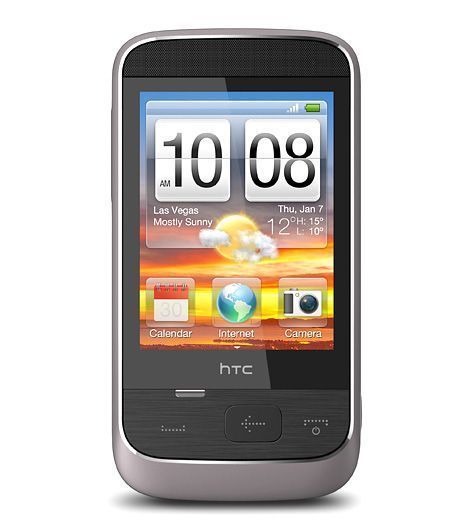dc16
- dEsPeraTe cRaNky -

For once, HTC has managed to surprise us with the pricing of their product. Known for coming out with top-of-the-line , but expensive smartphones, the Smart, priced below 10K, is the cheapest device ever launched by them in the Indian market.
But, does this low price point hamper the phone’s performance? Or, in a way, can it stand up to its ‘smarter’ and ‘pricier’ brothers?
The Smart is indeed smart-looking and sits pretty with a 2.8” touchcreen. Unlike other touchscreen devices in this segment, Smart doesn’t come across as a piece of toy you’d gift a college kid with. On the flipside, due to the strategic placement of metal in its body, it comes out as a phone with a lot of character -- something that is serious but has a fun side to it.
Other aspects, like the layout of the keys, had us stumped for a moment. It’s different and unique for an entry-level smartphone. The button which ends calls is also used as a phone-locker which seems a bit weird because it is situated right next to a big silver button with which you can access the menu. This big silver button overshadows the rest of the buttons due to its sheer size. Apart from the silver, green (obviously for attending calls), and the red buttons, it also has a tiny little button on the edge of the screen which gives out the mini onscreen menu for applications.
Coming to performance and functionality, the 2.8” screen has a QVGA resolution which, in normal cases, would be sneered at. But considering the size of the screen, it seems just right. Specification-wise, the Smart has a 300MHz processor, 256MB of RAM and is powered by Qualcomm’s Brew operating system. It’s true that Smart’s got a pretty raw deal against its big brothers but what’s unique is that we still get HTC’s sense features from the Android and Windows mobile range which gives us a fully loaded platform to play with.
The Smart also gives you an array of options to customise the look of your phone. Just pull down the top of the screen to access the scene menu where you can pre-define the look of the phone (placement of widgets, shortcuts and folders), according to your need. The user interface gives you seven home screens that you can build according to your taste and need.
The feature which made us most happy was the virtual keyboard. Even with its small screen size, the touch, which is not that responsive, was up to the mark when it came to typing messages. The messages come in a threaded format and are easy to follow as every contact’s conversation can be accessed via the message app or through the profile in the address book.
As expected, the Smart is not Wi-Fi enabled and so we had to rely on our slow networks to enter www. Zooming in on pages is not that easy as the wonderful pinch and zoom function is missing in here. For multimedia buffs, the Smart comes with a 3.5 mm jack for your normal headphone and a microHD card slot to dump all your music and videos in. But the video playback has its own jitters and is not as good as in other phones in this category.
The 3 megapixel camera felt a bit shaky and the results were not really what we expected it to be. It may be because of the QVGA screen or the pint-sized processor. Even the final images took their own sweet time to process the images.
And to do all this you also get a wonderful battery life. After a full charge we used the gadget for almost a full day and the battery meter was still at about 50%. We can’t help but be happy with the way the Smart performs but what we don’t like is the price. It should have been around the 7K-mark.
The Smart has a lot of potential. Had it been a bit more conservatively priced, Samsung’s Corby would have had a difficult time ahead.
